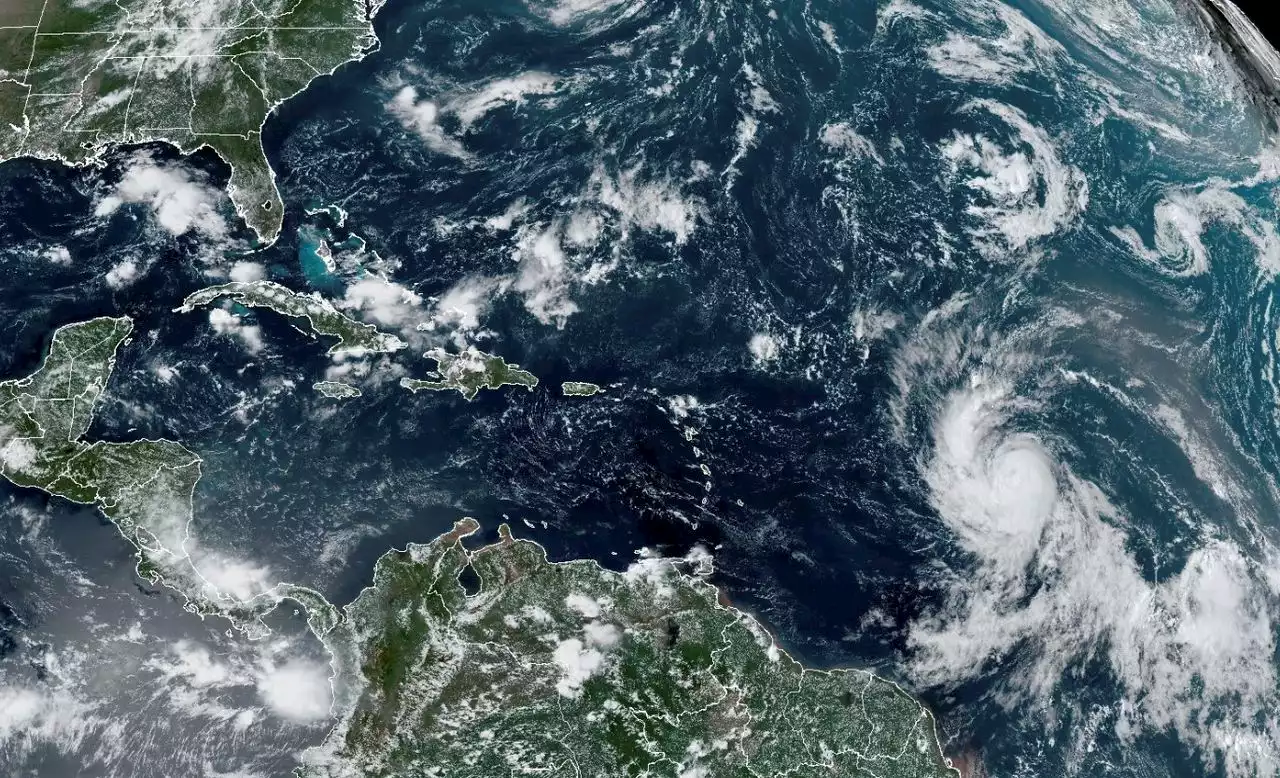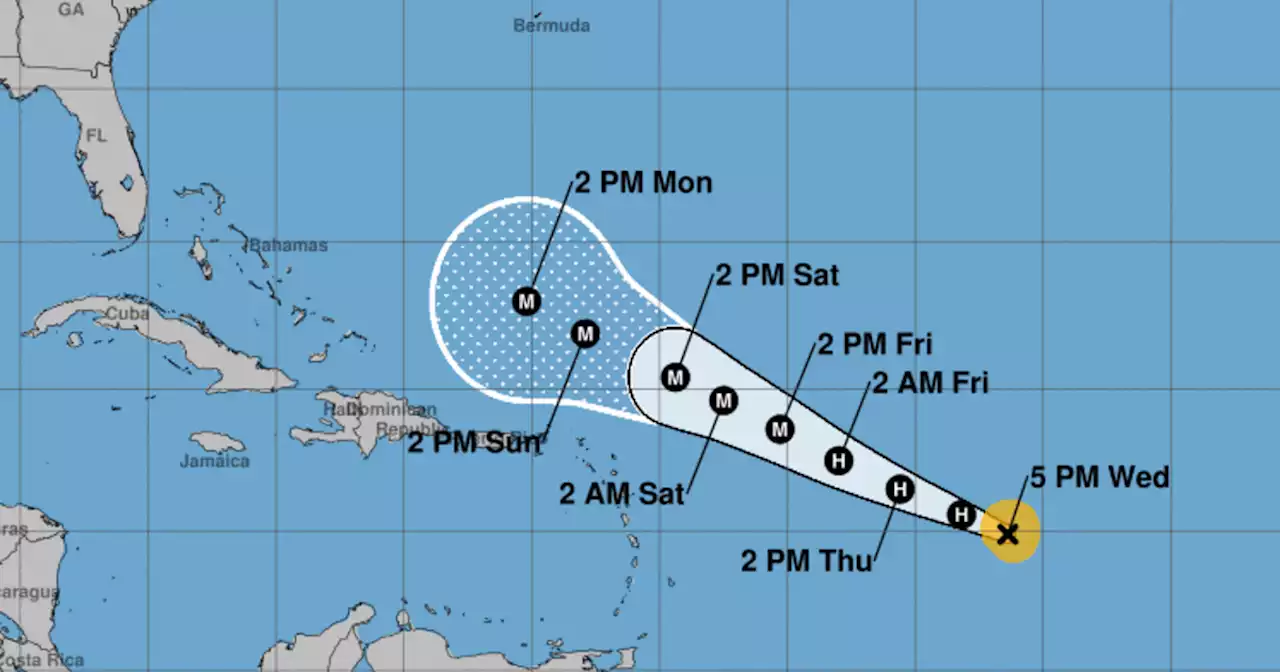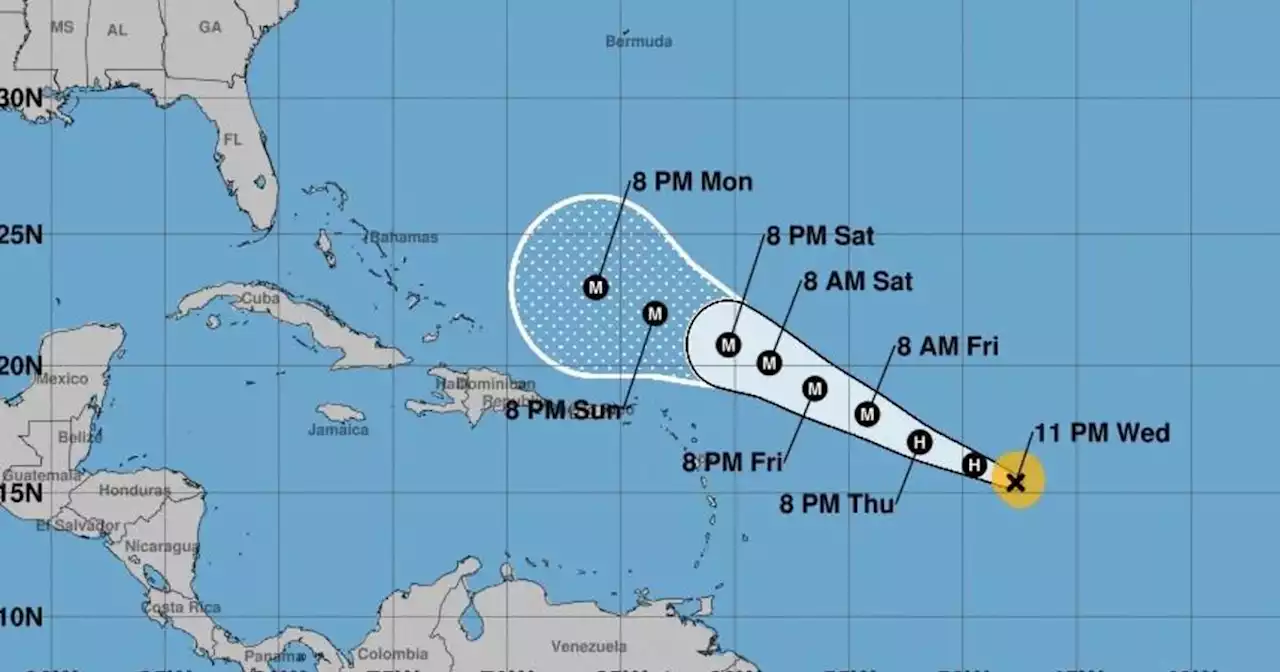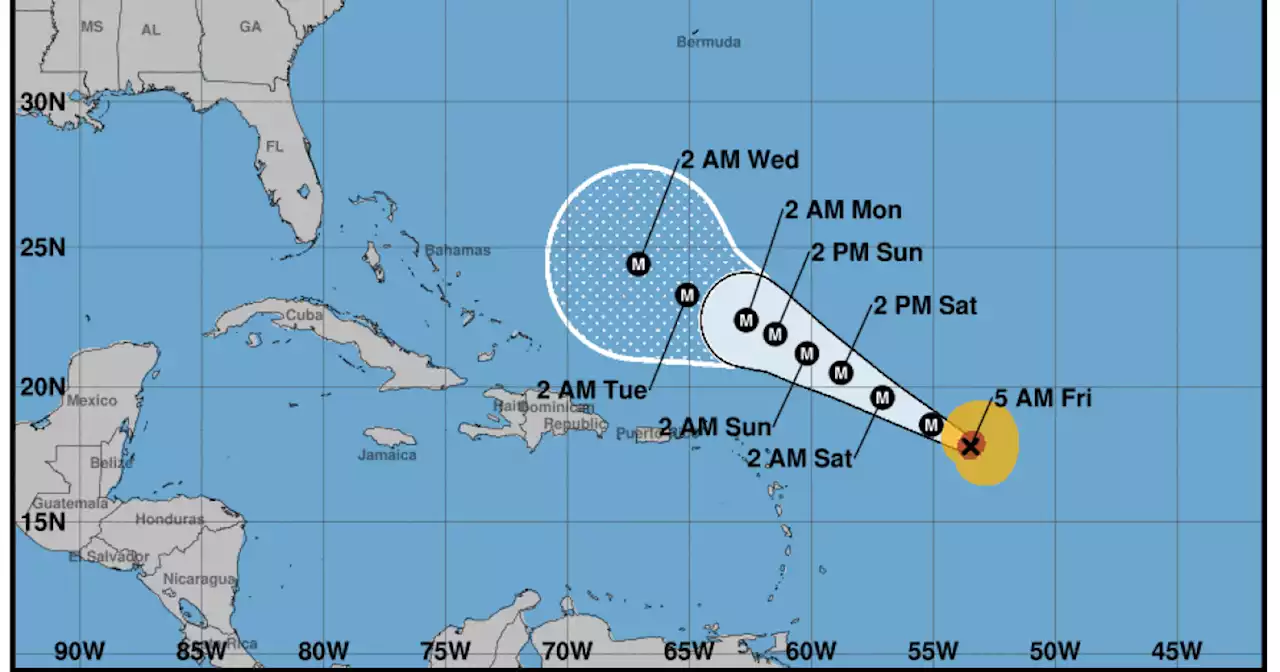It took just 24 hours for Lee's maximum sustained winds to rocket from 80 mph to 160 mph. Now the hurricane's intensity is fluctuating.
The fearsome storm's intensity will likely fluctuate, the NHC says, due to internal dynamics such as eye wall replacement. While some of the most eye-popping windspeed predictions have now been eased, the storm is still expected to remain a very powerful storm through the coming five days.
While its winds are exceptionally fast, the storm is predicted to slow its movement over the water to a near crawl. As of Friday morning, Lee was moving west-northwest at close to 14 mph, but the NHC predicts"a significant decrease in forward speed." A satellite image shows Hurricane Lee just before daybreak Friday, with the Leeward Islands and Puerto Rico to the west.
Malaysia Latest News, Malaysia Headlines
Similar News:You can also read news stories similar to this one that we have collected from other news sources.
 Hurricane Lee reaches Category 5 strength as winds increase to 160 mphCurrent models “are calling for remarkable rates of intensification, beyond rates normally seen with model forecasts,” the National Hurricane Center said.
Hurricane Lee reaches Category 5 strength as winds increase to 160 mphCurrent models “are calling for remarkable rates of intensification, beyond rates normally seen with model forecasts,” the National Hurricane Center said.
Read more »
 Hurricane Lee to become 'extremely dangerous major hurricane' by weekendForecasters say it's too soon to project where Lee is headed, but for now the Leeward Islands, where the Caribbean and Atlantic meet, should stay alert.
Hurricane Lee to become 'extremely dangerous major hurricane' by weekendForecasters say it's too soon to project where Lee is headed, but for now the Leeward Islands, where the Caribbean and Atlantic meet, should stay alert.
Read more »
 Hurricane Lee to become 'extremely dangerous major hurricane'Large ocean swells are expected to reach the Lesser Antilles by Friday, and then the U.S. and British Virgin Islands, Puerto Rico, the Bahamas, Bermuda and Hispaniola by the weekend, the hurricane center said.
Hurricane Lee to become 'extremely dangerous major hurricane'Large ocean swells are expected to reach the Lesser Antilles by Friday, and then the U.S. and British Virgin Islands, Puerto Rico, the Bahamas, Bermuda and Hispaniola by the weekend, the hurricane center said.
Read more »
 Hurricane Lee is Now a Major HurricaneHurricane Lee is Now a Major Hurricane
Hurricane Lee is Now a Major HurricaneHurricane Lee is Now a Major Hurricane
Read more »
 Lee formed in the Atlantic Ocean, look at the 2023 hurricane names to comeLee formed in the Atlantic Ocean, look at the 2023 hurricane names to come
Lee formed in the Atlantic Ocean, look at the 2023 hurricane names to comeLee formed in the Atlantic Ocean, look at the 2023 hurricane names to come
Read more »
![]() Tracking the tropics: Hurricane Lee now a Category 2; Tropical Depression 14 formsHurricane Lee continues to intensify as it moves through the Atlantic Ocean.
Tracking the tropics: Hurricane Lee now a Category 2; Tropical Depression 14 formsHurricane Lee continues to intensify as it moves through the Atlantic Ocean.
Read more »
